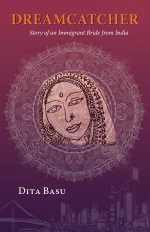Recent Posts
Dreamcatcher - The Experience
Years ago I took a trip with my daughter Nina and her Girls’ Scout group. I came to know about the ‘Dreamcatcher’ then. Sitting around a campfire we listened to stories and the sacred significance of this article.
Handmade willow hoops were woven to a web which included feathers and beads. A lady showed us and told us that they're traditionally suspended on cradles as a form of armor and protection.
The Ojibwe legend goes:
One day a grandmother watched patiently a spider spinning a web. Each day the spider spun his web above her sleeping place until one day her grandson noticed it and tried to kill it”.
“Don’t hurt him,” grandma told the boy in a soft tone. Surprised, the little boy answered, “But grandmother, you should not protect this spider.”
When the grandson left, the spider thanked the woman for her protection and offered her a gift. “I will spin you a web that hangs between you and the moon so that when you dream, it will snare the bad thoughts and keep them from you.”
Grandmother smiled and continued to watch the spider spin his web.
From then on people tried to make webs like that and hang over their loved ones' beds to protect them.
Later, I came across another story: the storyteller mentioned that this one was from the Lakota Legend and is exactly opposite. Let’s listen:
“A Lakota leader met Iktomi, a trickster who also held great wisdom. Appearing to the leader in the form of a spider, Iktomi made a hoop of willow and spun a web inside of it.
He told the aged Lakota man that many forces, both bright and dark would attempt to enter peoples’ dreams and that the dreamcatcher he was making would catch the bright forces and allow the dark ones to slip away and burn up. Iktomi instructed the old man to make dream catchers for his people so they could all achieve a bright future by capturing the good dreams that are blown about by the winds of the night. As you can see, in the Lakota version, dream catchers trap good dreams, just the opposite of the Ojibwe belief.”
The act of creating the dreamcatcher is sacred and an important traditional facet for the Ojibwe or the Lakota people and must be understood as such. While it is not forbidden to purchase a dreamcatcher, please make sure to honor and support Indigenous businesses, the Native American storyteller urged.
The following day with the girls we created Dream Catchers with hoops and threads and beads and talked about how the belief of the Native Americans should be honored.
Decades later, I was into jewelry making and got involved in going to craft fairs. There I met a lady, a fellow vendor who was selling her handcrafted Dream Catchers for a living. It was her dream to survive on her own selling them. I was not sure what her background was.
I thought of our dreams and all these things took shape later in creating my story. During the isolated lock out days of the pandemic I was writing,working on Dreamcatcher: story of an immigrant bride from India, and on the last day of 2020 the first draft was finished. Two more years took to polish it.
This is a work of fiction. And all characters are imagined. Yet, I believe Albert Camus, that “Fiction is the lie through which we tell the truth.”

